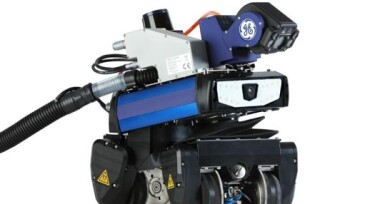inspections
-
GlobalData’s report "Robotics in Oil and Gas" notes that, while robotics has been a part of the oil and gas industry for several decades, growing digitalization and integration with artificial intelligence, cloud computing, and the Internet of Things have helped diversify robot use cases within the industry.
-
The rolling ultrasound scanner was used to confirm the integrity of concrete-based structures.
-
Group will inspect and audit drilling rigs for Petronas over the next 3 years.
-
Swiss robotics company Hydromea and Scottish remote technology firm ACE have agree to work together to use the world’s first underwater wireless remotely operated vehicle for inspection of offshore facilities.
-
Verlume and consortium partners are working to advance the development of a robotic fish designed for efficient offshore inspection.
-
The awards will be presented on 23 March at the Kuala Lumpur Convention Centre.
-
Inspection and certification services provider will continue select asset work for Ithaca Energy through January 2025.
-
Advanced nondestructive-testing technology such as drones and robotics were tried in Abu Dhabi National Oil Company gas-processing field sites successfully and demonstrated the benefits of using such technology for inspections to ensure asset integrity without any compromise on safety while saving time and operational expenses.
-
The risk-management firm is teaming up with academia and a robotics specialist for a research project focused on automatic processing of data gathered by autonomous and remote-controlled vehicles.
-
Saudi Aramco is accelerating the adoption and scaleup of disruptive and multipurpose robotic technologies to deliver safer, cost-effective, and efficient inspection capabilities, emergency response, aerial mapping, project monitoring, security surveillance, and environmental monitoring.










